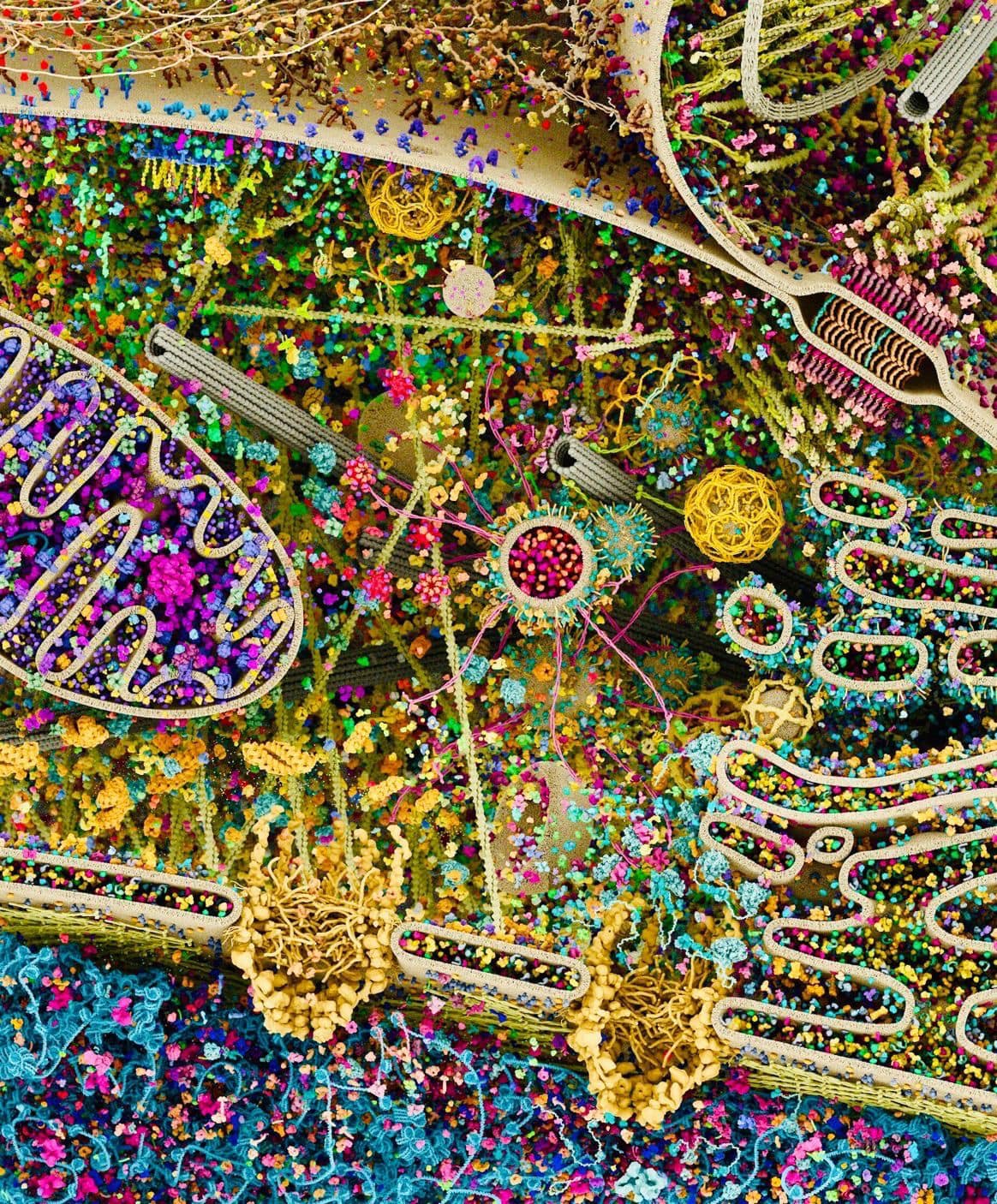Complete Guide to Enhancing your ENERGY #2
Energy Levels, November 25, 2021
Lets look at ways to boost your mitochondria number and efficiency when exercise isn't the best option.
2 - How to cultivate more cellular ENERGY
Lets look at habits to build the 'cellular engine' - our cells ability to produce energy. 1 in 3 adults report chronic fatigue in our hectic society.
Mitochondria are the cells batteries - the power plants of the cells (Here is an earlier article I wrote about mitochondria https://everfit.co.nz/articles/mitochondria-look-after-your-life-force). They take in fuel (glucose, fatty acids and amino acids) and produce ATP. This energy is at a foundational, cellular level. Cells make up tissue - tissue makes up organs - organs make up systems - systems make up an organism (human-being with trillions of cells). When mitochondria dysfunction it can affect EVERYTHING. They are the CRUX of health, energy, and longevity. There are many studies that back up this powerful statement (The role of mitochondria in health and disease, Mitochondrial content is central to nuclear gene expression: Profound implications for human health)
Mitochondrial dysfunction is linked to fatigued states (Mechanism of mitochondrial dysfunction during chronic fatigue, Muluye, R.A et al - "since mitochondrial dysfunction relates to almost all kinds of diseases and fatigue is a common symptom seen in many kinds of diseases, mitochondrial targeted therapy is the best choice for treatment of multiple diseases including fatigue")
- Allostatic load (total body stress load)
- Our bodies capacity to handle stress. At the core of this is our mitochondria (this is new information to me - I was always taught they were only energy producers in the cell)
"Mitochondria lie at the hub of the wheel of metabolism. Because mitochondria are also the concertmasters of innate immunity and inflammation, it makes them uniquely positioned to help the cell decide whether to devote energy and resources to 'peacetime' metabolism or cellular defense." Dr. Robert Naviaux
They are danger sensors - they produce energy or go into a defense mode. This is a fundamental driver of fatigue. You can't have long lasting energy if you are in a sympathetic (fight of flight) state. They control our resilience threshold. The more mitochondria you have the greater your ability to deal with stress (Is there a link between mitochondrial reserve respiratory capacity and aging? Journal of Aging Research)
What creates a decrease in the number of mitochondria and creates dysfunction?
- Aging (Decline in skeletal muscle mitochondrial respiratory chain function: possible factor in aging. Trounce et al, The Lancet. Studies show that you get around an 8% decline in mitochondrial capacity per decade). When you get over 40 every one has early onset mitochondrial dysfunction. Typically between the ages of 40-70 people lose 50% of their mitochondrial capacity (ability to produce energy).
- Lack of mitochondrial stimulation will take you to a lower resilience threshold over time.
Hormesis is the process by which a mild or acute stressor increases resistance to other stresses. Therefore increasing the health, resilience, and vitality of the organism. It can increase resistance to a variety of stresses. The more the body has been exposed to hormetic stressors and had the chance to adapt to them the more STRESS TOLERANT (resilient) and energetic your body becomes. So look at these daily habits to promote mitochondrial health.
- Exercise/training in a progressive fashion with time to adapt.
- Hypoxia - breath work (I love putting in breath hold work in my swimming routines)
- Cold - cold showers and swimming
- Fasting - promotes autophagy
- U.V light
People who don't regularly engage in hormesis (around 90% of the Western World) will lose 50% of their potential to produce energy between the ages of 20-40, and another 50% cut from the age of 40-70.
People who are in chronic fatigue states respond poorly to exercise - it can be counterproductive in many cases and worsen symptoms. Other forms of hormesis should be tried out first.
Sauna bathing is associated with a reduced risk of CHD, CVD, and all-cause mortality. It has being called a 'miracle drug' (Waon therapy - Infared dry sauna - perceived fatigue significantly reduced, Intern Med 2015; 54 (3) 333-8 - 30 sessions daily, pain and fatigue score reduced using VAS)
Using breathing techniques to induce low O2 levels in the blood (and the cells and mitochondria) to progressively train the mitochondria to utilise O2 more efficiently. This induces beneficial changes in mitochondrial function, biogenesis of mitochondria, decreases inflammation, boosts immune function, exercise performance, improves sleep, and overall energy levels. Hypoxic training teaches your blood to extract O2 more efficiently from the lungs. The gas exchange between alveoli and capillaries is enhanced. In Russia IHT has being studied for more than 30 years with overwhelming evidence of the benefits. There has been clinical trails of over 300,000 people suffering from varied conditions such as psychiatric disturbance, CV disease, and pediatric disease. It has been used for performance in high level athletes but impacts could be greater for the non-athletic population. Another study on 102 patients concluded that IHT may be a powerful anti-aging treatment as it helps the body clean out damaged and dysfunctional mitochondria and replace them with healthy mitochondria + it stimulates stem cells.
Practical applications
1)Pranayama exercise (check out my video for a demonstration https://www.youtube.com/watch?v=OzvlxmgSgTk )
2)Walking (or swimming) breath holds
Step 4 Repeat 4-12 times
*progress the walking aspect with using a hill. The step or stroke number is a very objective measure. If doing breath hold work in the pool ALWAYS have a swim buddy.
For Physiotherapy, Coaching, my Book, Training Plans, YouTube, FREE recipes, and more Articles
Connect below
https://linktr.ee/everfitcoach

Mitochondria are much more than just power houses within a cell - cellular landscape cross section by Evan Ingersoll & Gael McGill
.jpg?version=8)